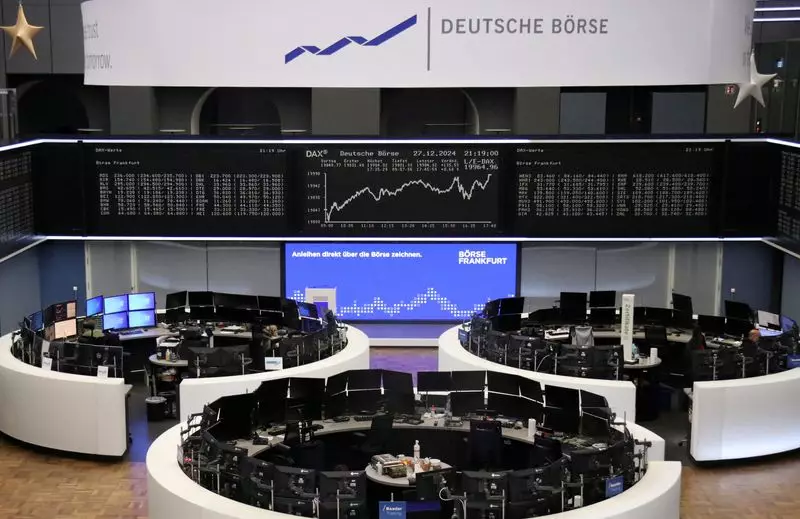European stock markets experienced a downturn on Monday, echoing the trends seen in Wall Street. With government bond yields remaining high, investors retreated from equities as the year drew to a close, which has seen a variety of performances across different regional markets. The pan-European STOXX 600 index witnessed a 0.6% decline, with the technology and health care sectors bearing the brunt of the losses. The trading environment was characterized by lower volumes, likely influenced by the upcoming New Year holiday.
One of the significant factors contributing to this market behavior is the 10-year German bund yield, which hovered near its highest levels since mid-November. This increase is closely aligned with rising U.S. Treasury yields, driven by uncertainty surrounding next year’s monetary policy and concerns over inflationary strategies potentially linked to political changes under a new Trump presidency. Investors are maintaining a cautious stance, balancing their portfolios against expectations of altered economic conditions as the year rolls into 2024.
Despite the recent decline, the STOXX 600 is on track for an impressive 5.9% annual gain, driven primarily by strong performances from German stocks, while French stocks have notably lagged behind. This disparity highlights the challenges faced by different markets within Europe, especially when contrasted against the S&P 500’s staggering 25% growth this year. The tech fueled surge in the U.S. market underscores the dichotomy, as interest rate cuts from the Federal Reserve have significantly benefited Wall Street’s technology giants, further isolating European performance.
A deeper look into sector performances reveals that food and beverages, as well as the automotive sector, are expected to be among the worst performers for the year across Europe. Conversely, banking has emerged as a comparatively robust sector, possibly benefiting from adjusted rates and emerging economic policies. This dichotomy in performance accentuates the varying degrees of resilience exhibited by different sectors as they adapt to shifting economic conditions.
In individual stock movements, giants such as Siemens Healthineers faced a 1.7% decline after revelations about a potential reevaluation of its stake in the medical tech unit. Contrasting with this, BayWa saw a notable surge of 17%, buoyed by a successful restructuring agreement with its primary shareholders and financiers. These fluctuations reflect an underlying volatility in the market, influenced by both macroeconomic factors and corporate-specific news.
As we approach the New Year, the current climate within European financial markets suggests a complex interplay of factors, from high bond yields to sectoral disparities and individual stock responses. While the overall annual performance has been commendable, concerns regarding monetary policy and inflation loom large. As investors reflect on the past year, they will need to navigate through these challenges with a keen eye on the economic indicators that will likely dictate market trends in 2024.

